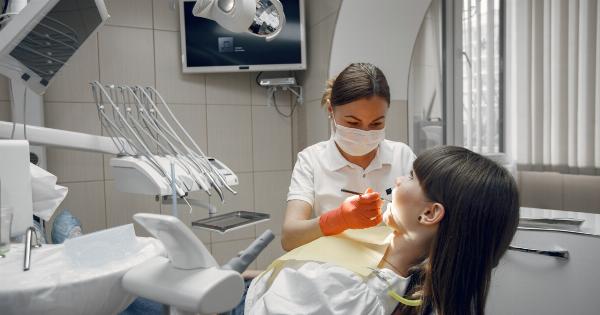Migraine is a neurological condition characterized by intense headaches often accompanied by nausea, vomiting, and sensitivity to light and sound.
It affects approximately 1 billion people worldwide, making it one of the most prevalent health conditions globally. While migraines have long been associated with debilitating pain, recent research suggests that they may also increase the risk of silent strokes.
What are silent strokes?
Silent strokes, also known as silent cerebral infarctions (SCIs), occur when there is a disruption in blood flow to parts of the brain, leading to tissue damage.
Unlike regular strokes, silent strokes do not exhibit immediate symptoms and often go undiagnosed. These strokes are typically small and affect regions of the brain responsible for cognitive functions such as memory, language, and decision-making.
Migraines and their connection to silent strokes
Several studies have found a correlation between migraines and an increased risk of silent strokes.
According to one study published in the journal Stroke, migraine sufferers are more than twice as likely to experience silent strokes compared to individuals who do not have migraines. The risk is particularly elevated in those who experience migraines with aura, which includes visual disturbances such as flashes of light or blind spots before the headache.
Possible mechanisms behind the association
The exact mechanisms linking migraines to an increased risk of silent strokes are not yet fully understood. However, researchers have proposed several theories that could explain this relationship.
1. Vascular changes and endothelial dysfunction
Migraine attacks can lead to changes in blood vessels within the brain. These vascular changes disrupt blood flow and may contribute to the development of silent strokes.
Endothelial dysfunction, characterized by impaired blood vessel function, is also more common in migraine sufferers and may further increase the risk of stroke.
2. Cortical spreading depression
Cortical spreading depression (CSD) is a wave of neuronal and glial depolarization followed by prolonged suppression of brain activity. This phenomenon is believed to be involved in migraine pathophysiology.
CSD events might trigger a cascade of processes that increase the vulnerability of brain tissue to ischemia, potentially leading to silent strokes.
3. Inflammation and oxidative stress
Migraines have been associated with increased levels of inflammation and oxidative stress in the body.
Chronic inflammation and oxidative stress can damage blood vessels and impair their ability to deliver oxygen and nutrients to the brain, increasing the risk of silent strokes.
4. Shared risk factors
Both migraines and silent strokes share certain risk factors, including hypertension, smoking, obesity, and a sedentary lifestyle. The presence of these risk factors may explain why the two conditions frequently occur together.
Recognition and impact of silent strokes
Due to their lack of immediate symptoms, silent strokes often go unnoticed by individuals. Many people only become aware of their occurrence when cognitive impairments become evident, such as difficulties with memory or thinking.
The impact of silent strokes can vary depending on their frequency, severity, and location within the brain. They have been associated with an increased risk of cognitive decline, vascular dementia, and even subsequent major strokes.
Identifying silent strokes in migraine sufferers
Since silent strokes are not immediately noticeable, it can be challenging to identify them in individuals with migraines.
However, certain imaging techniques, such as magnetic resonance imaging (MRI) and diffusion-weighted imaging (DWI), can help detect these strokes by revealing areas of brain tissue damage. Regular monitoring and early detection of silent strokes in migraine sufferers can aid in implementing appropriate preventive strategies to minimize the risk of future strokes.
Preventive measures and lifestyle modifications
Although there is no definitive cure for migraines or silent strokes, certain preventive measures and lifestyle modifications can help reduce the risk and impact of these conditions.
1. Managing migraine triggers
Identifying and managing triggers that can precipitate migraines is essential. Common triggers include certain foods (such as caffeine, alcohol, and processed meats), lack of sleep, stress, hormonal changes, and environmental factors.
Keeping a migraine diary can help pinpoint triggers and enable individuals to take appropriate measures to avoid them.
2. Medication and therapies
Various medications, such as triptans, anti-nausea drugs, and pain relievers, can help alleviate migraine symptoms and reduce the frequency and intensity of attacks.
In some cases, preventive medications may be prescribed to reduce the overall number of migraines. Additionally, therapies such as cognitive-behavioral therapy and biofeedback have shown promising results in managing migraines.
3. Blood pressure management
Given that hypertension is a shared risk factor between migraines and silent strokes, it is crucial for individuals to monitor and manage their blood pressure.
Regular exercise, a balanced diet low in salt and saturated fats, and stress reduction techniques can help maintain optimal blood pressure levels.
4. Lifestyle changes
Adopting a healthy lifestyle can significantly improve overall well-being and reduce the risk of both migraines and silent strokes.
This includes regular physical activity, maintaining a healthy weight, avoiding smoking and excessive alcohol consumption, managing stress levels, and getting an adequate amount of sleep.
Conclusion
Migraine sufferers are more likely to experience silent strokes compared to those without migraines.
The exact causal relationship between the two conditions remains unclear, but disruptions in blood flow, endothelial dysfunction, cortical spreading depression, inflammation, oxidative stress, and shared risk factors likely play a role. Recognizing and monitoring silent strokes in migraine sufferers is crucial to prevent future strokes and minimize cognitive impairments.
By managing migraine triggers, seeking appropriate treatments, and adopting a healthy lifestyle, individuals can mitigate the risk and impact of both migraines and silent strokes.


























